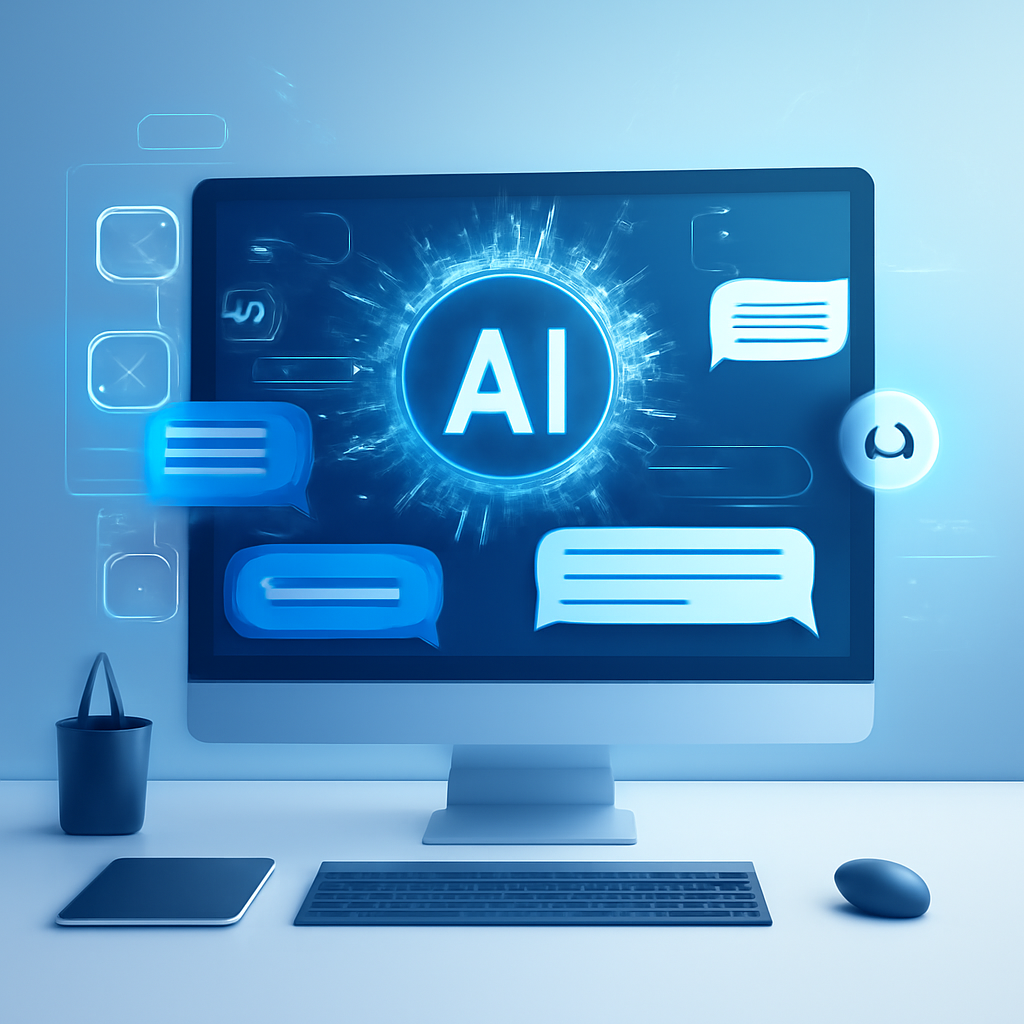AI Response Generator: The Ultimate Guide to Automated Message Creation
%20(1).png)
When was the last time you needed a fast, accurate answer — whether for a client, a social media post, or a team update — but didn’t have the time to craft it? In 2025, speed and relevance decide trust, engagement, and even revenue. Across email, chat, social media, and internal platforms, people now expect instant, personalized responses that still sound human.
AI response generators make that possible. They can process your question, draw on relevant context, match your tone, and deliver a polished reply in seconds — no matter the channel or audience.
In this guide, you’ll learn what AI response generators are, how they work, and how to choose one that fits your workflow.

Key Takeaways
- AI response generators save time and ensure consistent tone, making fast, high-quality replies possible across email, chat, social, and more.
- Modern tools combine context awareness with customization, allowing replies that match your voice and adapt to different audiences.
- Choosing the right platform depends on workflow, scale, and integration needs — not all AI solutions are built for the same tasks.
What Is An AI Response Generator?
An AI response generator is a tool that takes any question or prompt you give it, and instantly produces a clear, human-like answer. You’re not limited to pre-set menus or scripted replies; you decide the question, and the AI crafts the response.
It works across almost any context:
- Explaining complex concepts in simple terms
- Drafting professional replies to emails or messages
- Summarizing information from multiple sources
- Giving creative suggestions or brainstorming ideas
Tools like Creaitor’s Answer to Question assistant don’t just match keywords; they interpret meaning and deliver a reply that’s relevant, accurate, and aligned with your style.
This flexibility makes AI response generators just as valuable for marketers, researchers, and content creators as they are for customer service teams.
Why It Matters Now
Information overload isn’t slowing down — if anything, it’s accelerating. Questions come from every direction: Slack messages, client emails, social comments, research queries, internal project threads. Each one demands a clear, timely, and well-worded response.
The challenge isn’t just answering quickly — it’s answering well. AI response generators meet this challenge head-on. With large language models trained on diverse data, they can adapt instantly to different contexts, reducing time spent drafting and redrafting.
And there’s a competitive edge: businesses, creators, and teams that adopt these tools can handle more requests, deliver higher-quality communication, and scale without sacrificing clarity or brand voice.
How It Works
At its core, an AI response generator takes a question or prompt you provide, interprets it, and returns a human-like answer.
The process is simple:
- You ask – Type or paste the question you want answered.
- The AI interprets – Natural Language Processing (NLP) analyzes your words, detects context, and identifies the intent behind your request.
- It generates – Using a trained large language model (LLM), the system crafts a clear, relevant, and context-aware answer.
- You refine (if needed) – Adjust tone, length, or specifics to fit your exact purpose.
Modern AI response generators — like Creaitor’s Answer to Question assistant — go beyond basic Q&A. They can match a formal, casual, or persuasive tone, provide structured answers with bullet points or numbered lists, integrate keywords for SEO when publishing online and support multiple languages for global communication.
The result? You spend less time researching and drafting, and more time applying the answers to move projects forward.
Choosing the Right Tool
The right AI response generator depends on your goals, workflow, and quality expectations. Some prioritize lightning-fast answers, others focus on nuanced tone control, and a few excel at integrating directly into your existing tools.
When evaluating your options, focus on:
- Ease of use: A good tool should take you from question to finished answer without a steep learning curve.
- Answer quality: The best systems deliver contextually relevant, accurate, and well-structured responses that need little editing.
- Language and tone flexibility: Essential for global teams or brands with a defined voice.
Creaitor’s Answer to Question AI Assistant covers all these bases. You can input any question — from “What’s the simplest way to explain quantum computing?” to “Write a persuasive blurb for a new fitness app” — and receive a clear, well-formatted answer. With tone controls, keyword integration, and multi-language support, it’s equally at home in content creation, customer communication, and research.
Benefits of AI Response Generators
An AI response generator cuts response times from minutes to seconds, keeps your tone and style consistent across every message, and improves clarity by catching errors and structuring answers logically. The result is less time spent on repetitive work and more time for strategic thinking.
With Creaitor’s Answer to Question AI Assistant, these gains are tangible: faster turnaround, fewer revisions, and answers ready for immediate use in emails, content, or client communication. For businesses, that means reduced costs and more capacity; for individuals, it’s a direct path to more focus and better results.
Best Practices & Pitfalls
Getting the most out of an AI response generator starts with good inputs. The clearer and more specific your question or prompt, the more relevant and accurate the answer will be. Treat it like working with a human assistant — provide enough context so the AI can tailor its response.
Consistency comes from fine-tuning. Spend time adjusting tone and phrasing to match your style, and save the settings or examples that work best. Regularly review the AI’s output to ensure it stays aligned with your standards, and don’t be afraid to edit — AI is a collaborator, not a replacement for judgment.
The biggest pitfalls come from over-reliance and poor oversight. Blindly publishing AI-generated responses without checking facts or nuance can damage trust. Skipping training and refinement means the tool never learns what “good” looks like for you. And expecting it to handle every scenario will lead to disappointment — AI excels at speed and consistency, but it still needs a human touch.
Frequently Asked Questions
How does an AI response generator work?
AI response generators use Natural Language Processing (NLP) and Machine Learning to analyze your question, interpret its meaning, and produce a suitable reply. Advanced tools are trained on large datasets, enabling them to generate accurate and context-aware responses.
Can I use an AI response generator for any type of question?
Yes. Tools like Creaitor’s Answer to Question AI assistant can handle a wide range of questions, from business and marketing to technical topics, as long as you provide a clear and specific prompt.
Are AI response generators good for customer service?
Absolutely. AI response generators can answer FAQs, handle basic troubleshooting, and provide instant replies to common inquiries. They help free up human agents for more complex issues.
Bottom Line
AI response generators have evolved into powerful partners for handling a wide range of communication needs — from quick factual answers to polished, brand-aligned replies. The key is using them with intention: provide clear prompts, refine the tone, and always review before sending.
Creaitor’s Answer to Question AI assistant makes this process simple. You ask the question, it delivers a relevant, well-structured answer in seconds.
If you want faster, more consistent responses without sacrificing quality, start with Creaitor today and see how AI can transform the way you communicate.
Blogs que vous pourriez également aimer

How to Create Perfect Conclusion Paragraphs with AI (Step-by-Step)

Email Response Generator: Write Perfect Emails in Half the Time

